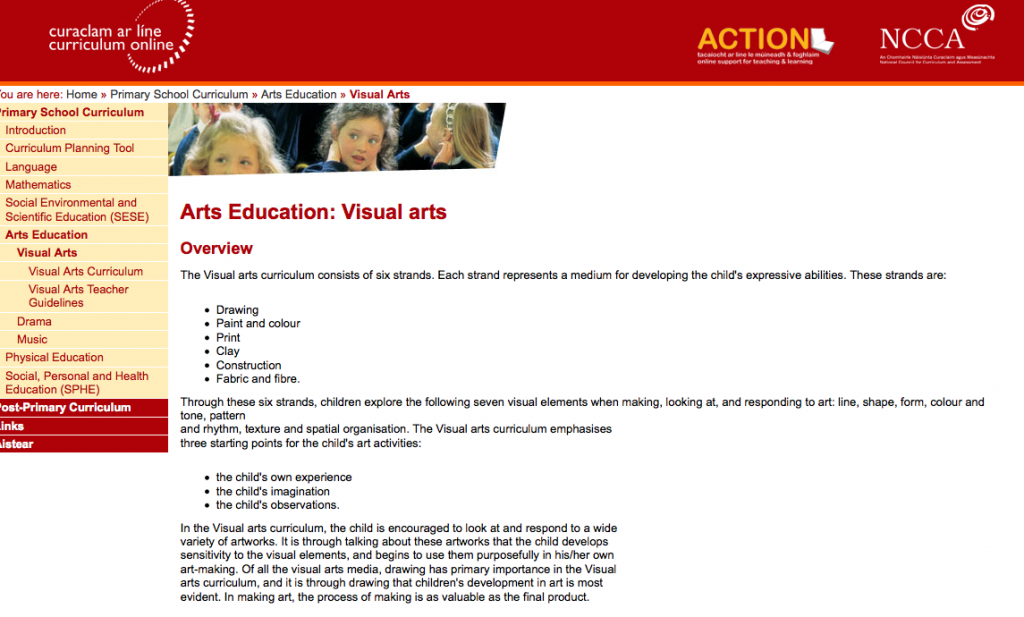Primary
http://www.curriculumonline.ie/en/Primary_School_Curriculum/Arts_Education/Visual_Arts/
Arts Education: Visual arts
Overview
The Visual arts curriculum consists of six strands. Each strand represents a medium for developing the child’s expressive abilities. These strands are:
- Drawing
- Paint and colour
- Clay
- Construction
- Fabric and fibre.
Through these six strands, children explore the following seven visual elements when making, looking at, and responding to art: line, shape, form, colour and tone, pattern
and rhythm, texture and spatial organisation. The Visual arts curriculum emphasises
three starting points for the child’s art activities:
- the child’s own experience
- the child’s imagination
- the child’s observations.
In the Visual arts curriculum, the child is encouraged to look at and respond to a wide
variety of artworks. It is through talking about these artworks that the child develops
sensitivity to the visual elements, and begins to use them purposefully in his/her own
art-making. Of all the visual arts media, drawing has primary importance in the Visual
arts curriculum, and it is through drawing that children’s development in art is most
evident. In making art, the process of making is as valuable as the final product.
Current Status
National in-service for the Visual arts Curriculum took place during the 2000/2001 school year. Implementation of the curriculum by teachers in primary schools began in the 2001/2002 school year. The advisory service provided by the Primary Professional Development Service (PPDS) continues to support teachers and principals in their implementation work.
Documentation
Arts Education: Visual arts Curriculum (1999)
Arts Education: Teacher Guidelines (1999)
To view and download PDF format of these documents, please click here.
Related Publications
- Guidelines for Teachers of Students with General Learning Disabilities
- Assessment in the Primary School Curriculum: Guidelines for Schools (2005) (PDF)
- Assessment in the Primary School Curriculum: Guidelines for Schools (2005) (online browsable version)
- Primary Curriculum Review: Phase 1 (2005) (PDF)


No comments yet.